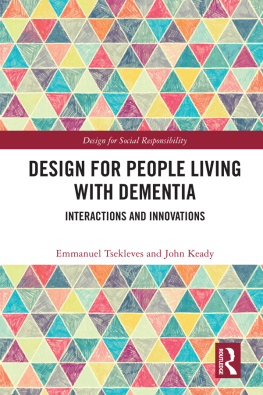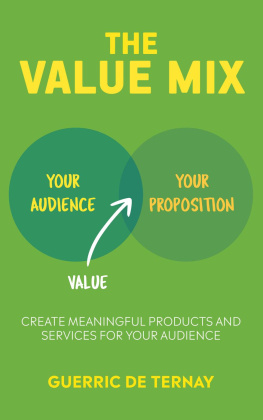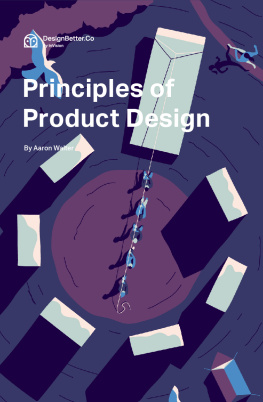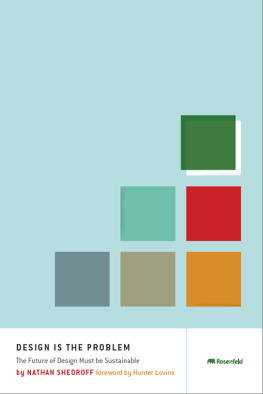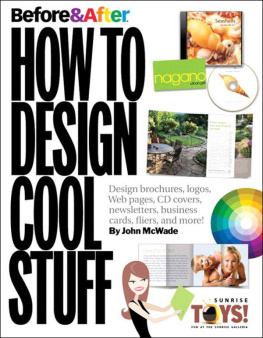
Meaningful Stuff
Design Thinking, Design Theory
Ken Friedman and Erik Stolterman, editors
Design Things, A. Telier (Thomas Binder, Pelle Ehn, Giorgio De Michelis, Giulio Jacucci, Per Linde, and Ina Wagner), 2011
Chinas Design Revolution, Lorraine Justice, 2012
Adversarial Design, Carl DiSalvo, 2012
The Aesthetics of Imagination in Design, Mads Nygaard Folkmann, 2013
Linkography: Unfolding the Design Process, Gabriela Goldschmidt, 2014
Situated Design Methods, edited by Jesper Simonsen, Connie Svabo, Sara Malou Strandvad, Kristine Samson, Morten Hertzum, and Ole Erik Hansen, 2014
Taking [A]part: The Politics and Aesthetics of Participation in Experience-Centered Design, John McCarthy and Peter Wright, 2015
Design, When Everybody Designs: An Introduction to Design for Social Innovation, Ezio Manzini, 2015
Frame Innovation: Creating New Thinking by Design, Kees Dorst, 2015
Designing Publics, Christopher A. Le Dantec, 2016
Overcrowded: Designing Meaningful Products in a World Awash with Ideas, Roberto Verganti, 2016
FireSigns: A Semiotic Theory for Graphic Design, Steven Skaggs, 2017
Making Design Theory, Johan Redstrm, 2017
Critical Fabulations: Reworking the Methods and Margins of Design, Daniela Rosner, 2018
Designing with the Body: Somaesthetic Interaction Design, Kristina Hk, 2018
Discursive Design: Critical, Speculative, and Alternative Things, Bruce M. Tharp and Stephanie M. Tharp, 2018
Pretense Design: Surface over Substance, Per Mollerup, 2019
Being and the Screen: How the Digital Changes Perception, Stphane Vial, 2019
How Artifacts Afford: The Power and Politics of Everyday Things, Jenny L. Davis, 2020
Meaningful Stuff: Design That Lasts, Jonathan Chapman, 2021
Meaningful Stuff
Design That Lasts
Jonathan Chapman
The MIT Press
Cambridge, Massachusetts
London, England
2021 Massachusetts Institute of Technology
All rights reserved. No part of this book may be reproduced in any form by any electronic or mechanical means (including photocopying, recording, or information storage and retrieval) without permission in writing from the publisher.
This book was set in ITC Stone Serif Std and ITC Stone Sans Std by New Best-set Typesetters Ltd.
Library of Congress Cataloging-in-Publication Data
Names: Chapman, Jonathan, 1974 author.
Title: Meaningful stuff : design that lasts / Jonathan Chapman.
Description: Cambridge, Massachusetts : The MIT Press, [2021] | Series: Design thinking, design theory | Includes bibliographical references and index.
Identifiers: LCCN 2020025447 | ISBN 9780262045728 (hardcover)
Subjects: LCSH: Product design. | Material culture. | Commercial productsPsychological aspects. | Waste minimization.
Classification: LCC TS171.4 .C464 2021 | DDC 670dc23
LC record available at https://lccn.loc.gov/2020025447
10 9 8 7 6 5 4 3 2 1
d_r0
Contents
Series Foreword
As professions go, design is relatively young. The practice of design predates professions. In fact, the practice of designmaking things to serve a useful goal, making toolspredates the human race. Making tools is one of the attributes that made us human in the first place.
Design, in the most generic sense of the word, began over 2.5 million years ago when Homo habilis manufactured the first tools. Human beings were designing well before we began to walk upright. Four hundred thousand years ago, we began to manufacture spears. By forty thousand years ago, we had moved up to specialized tools.
Urban design and architecture came along ten thousand years ago in Mesopotamia. Interior architecture and furniture design probably emerged with them. It was another five thousand years before graphic design and typography got their start in Sumeria with the development of cuneiform. After that, things picked up speed.
All goods and services are designed. The urge to designto consider a situation, imagine a better situation, and act to create that improved situationgoes back to our prehuman ancestors. Making tools helped us to become what we are: design helped to make us human.
Today, the word design means many things. The common factor linking them is service, and designers are engaged in a service profession in which the results of their work meet human needs.
Design is first of all a process. The word design entered the English language in the 1500s as a verb, with the first written citation of the verb dated to the year 1548. Merriam-Websters Collegiate Dictionary defines the verb design as to conceive and plan out in the mind; to have as a specific purpose; to devise for a specific function or end. Related to these is the act of drawing, with an emphasis on the nature of the drawing as a plan or map, as well as to draw plans for; to create, fashion, execute or construct according to plan.
Half a century later, the word began to be used as a noun, with the first cited use of the noun design occurring in 1588. Merriam-Websters defines the noun as a particular purpose held in view by an individual or group; deliberate, purposive planning; a mental project or scheme in which means to an end are laid down. Here, too, purpose and planning toward desired outcomes are central. Among these are a preliminary sketch or outline showing the main features of something to be executed; an underlying scheme that governs functioning, developing or unfolding; a plan or protocol for carrying out or accomplishing something; the arrangement of elements or details in a product or work of art. Today, we design large, complex processes, systems, and services, and we design organizations and structures to produce them. Design has changed considerably since our remote ancestors made the first stone tools.
At a highly abstract level, Herbert Simons definition covers nearly all imaginable instances of design. To design, Simon writes, is to [devise] courses of action aimed at changing existing situations into preferred ones (Simon, The Sciences of the Artificial, 2nd ed. [MIT Press, 1982], 129). Design, properly defined, is the entire process across the full range of domains required for any given outcome.
But the design process is always more than a general, abstract way of working. Design takes concrete form in the work of the service professions that meet human needs, a broad range of making and planning disciplines. These include industrial design, graphic design, textile design, furniture design, information design, process design, product design, interaction design, transportation design, educational design, systems design, urban design, design leadership, and design management, as well as architecture, engineering, information technology, and computer science.
These fields focus on different subjects and objects. They have distinct traditions, methods, and vocabularies, used and put into practice by distinct and often dissimilar professional groups. Although the traditions dividing these groups are distinct, common boundaries sometimes form a border. Where this happens, they serve as meeting points where common concerns build bridges. Today, ten challenges uniting the design professions form such a set of common concerns.
Three performance challenges, four substantive challenges, and three contextual challenges bind the design disciplines and professions together as a common field. The performance challenges arise because all design professions
Next page

